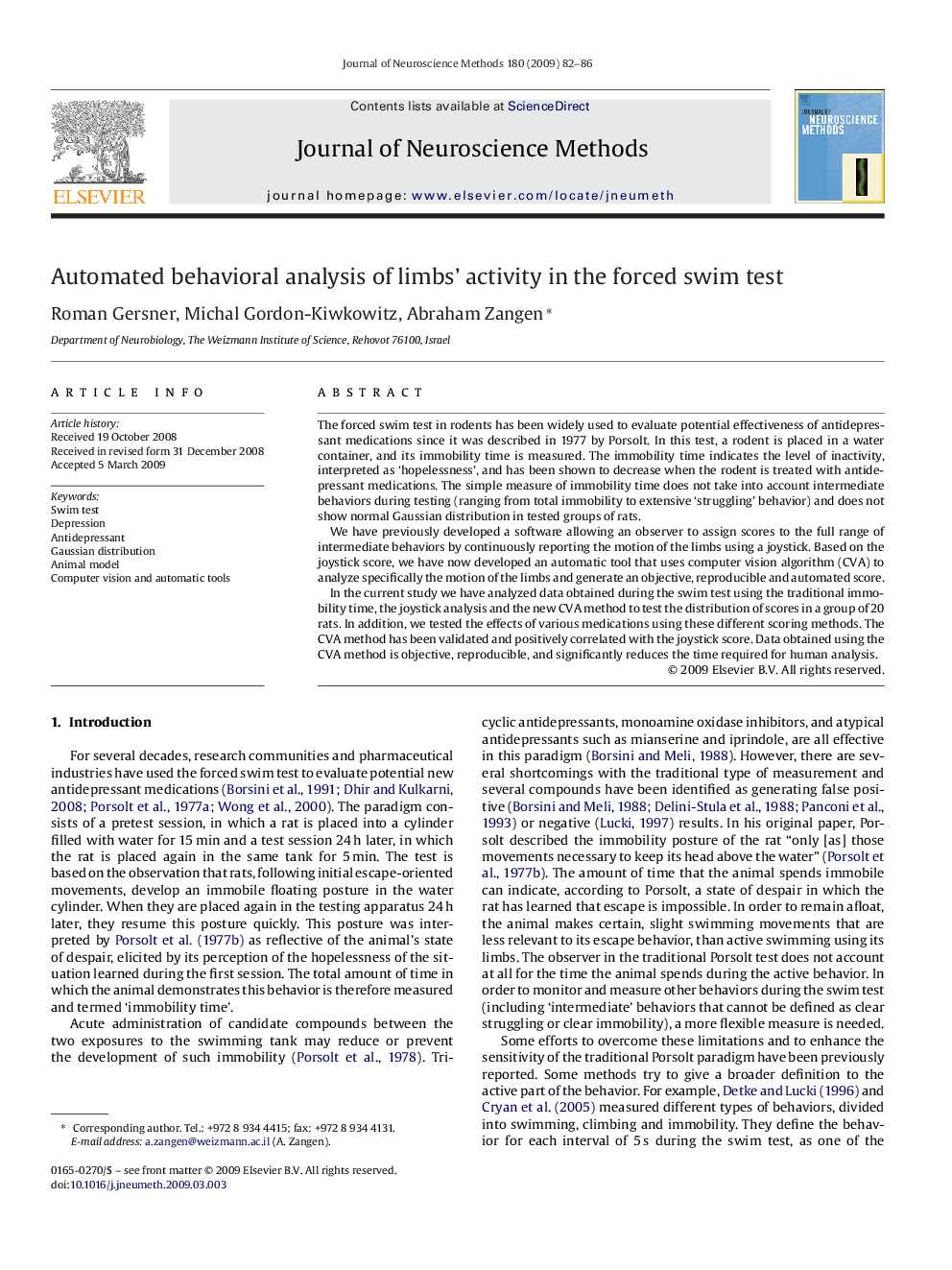| کد مقاله | کد نشریه | سال انتشار | مقاله انگلیسی | نسخه تمام متن |
|---|---|---|---|---|
| 4336157 | 1295197 | 2009 | 5 صفحه PDF | دانلود رایگان |

The forced swim test in rodents has been widely used to evaluate potential effectiveness of antidepressant medications since it was described in 1977 by Porsolt. In this test, a rodent is placed in a water container, and its immobility time is measured. The immobility time indicates the level of inactivity, interpreted as ‘hopelessness’, and has been shown to decrease when the rodent is treated with antidepressant medications. The simple measure of immobility time does not take into account intermediate behaviors during testing (ranging from total immobility to extensive ‘struggling’ behavior) and does not show normal Gaussian distribution in tested groups of rats.We have previously developed a software allowing an observer to assign scores to the full range of intermediate behaviors by continuously reporting the motion of the limbs using a joystick. Based on the joystick score, we have now developed an automatic tool that uses computer vision algorithm (CVA) to analyze specifically the motion of the limbs and generate an objective, reproducible and automated score.In the current study we have analyzed data obtained during the swim test using the traditional immobility time, the joystick analysis and the new CVA method to test the distribution of scores in a group of 20 rats. In addition, we tested the effects of various medications using these different scoring methods. The CVA method has been validated and positively correlated with the joystick score. Data obtained using the CVA method is objective, reproducible, and significantly reduces the time required for human analysis.
Journal: Journal of Neuroscience Methods - Volume 180, Issue 1, 30 May 2009, Pages 82–86